'Many people find contemporary dance difficult. Especially performances by young creators who experiment and seek new ways. At the Moving Futures festival, everyone can discover how dance can touch you. We do this not only by showing good performances by young makers. We also offer activities around it, context programmes. By doing so, we give the audience tools to connect with what dancers show.'
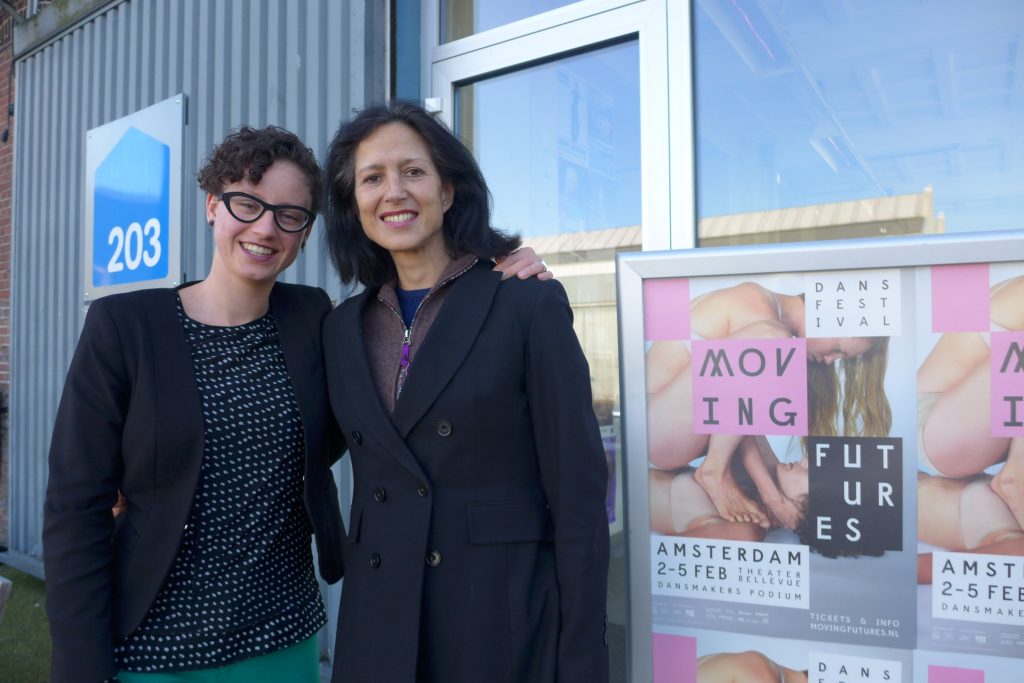
Itinerant festival
It is much needed. Budget cuts since 2013 are hitting young theatre-makers hard. To sustain themselves, they need to reach more audiences. That is why five dance production houses decided to form a national network. The aim is to organise more playing opportunities, including through a touring festival. Dansmakers Amsterdam, Dansateliers Rotterdam, DansBrabant from Tilburg, De Nieuwe Oost from Arnhem and Random Collision from Groningen started Moving Futures. A springboard project for young makers.
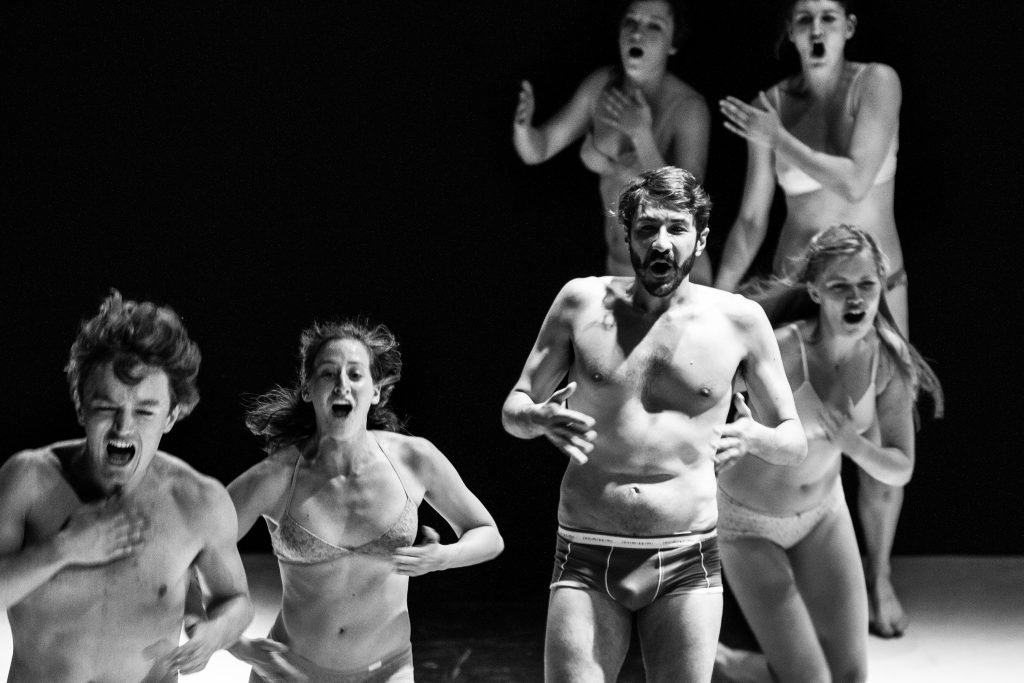
Suzy Blok is choreographer and artistic director of Dansmakers Amsterdam. She is one of the organisers and curators of the Moving Futures festival. This year, it is experiencing its third edition. It travels through eight cities in the Netherlands.
,,We have a fine cooperation with the other production houses. On many levels. We put together a well-considered programme. In addition, we were guided by some questions. How can we change the perception that modern dance is difficult? How can we remove the fear of it? Not only dance groups and production houses are facing cuts. Theatres are also facing cuts. As a result, the doors closed for many young makers. After all, theatres want to be sure of full theatres. But some theatres do not want to lose the young generation of theatre makers after all. We consulted with them about our programme."
More playgrounds
One of the choreographers whose work is on show is Marie Goeminne. She is happy with Moving Futures. ,,I don't get a structural subsidy. So I have to submit applications for each project. I have to submit such an application even before I start working on my choreography. Grant funds want a guarantee that a performance will be in many theatres. But theatres don't want to book performances until they have seen them. A vicious circle, in other words. Moving Futures breaks it. For instance, it helps me get extra performance spaces for my choreography 'Have I Been Here Before'."
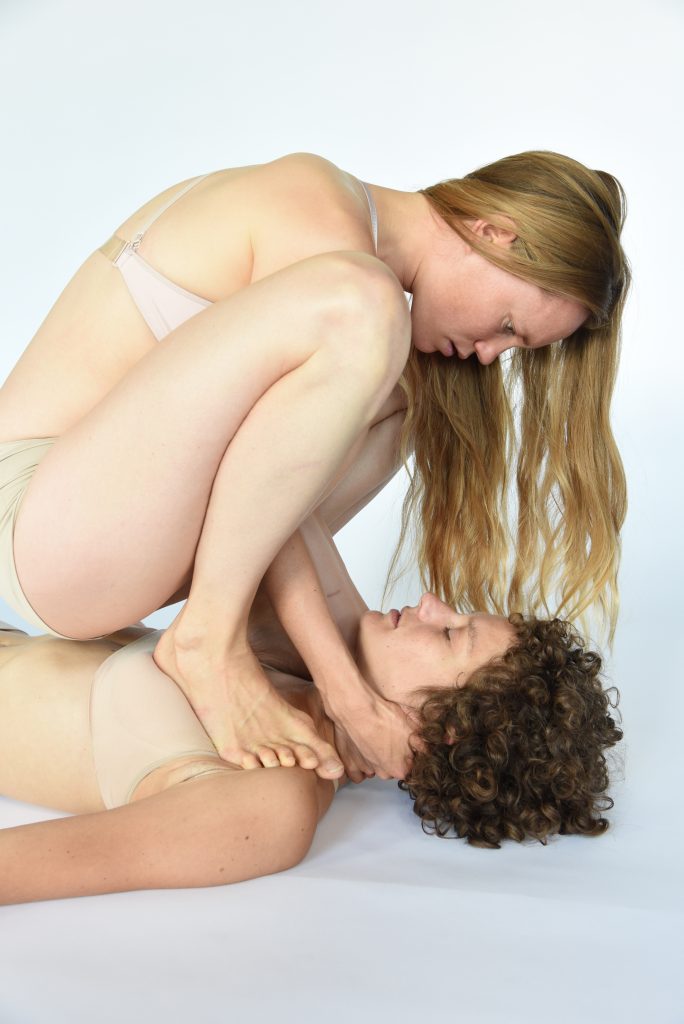
Context programmes
The context programmes that Moving Futures delivers with it win over the theatres. They establish a connection with audiences. The aim is to develop other ways of reflecting on theatre. The context programmes include lectures, crossovers with scientists and poets, pre- and post-show discussions. There are also meetings, parties and dinners with dancers and choreographers. Each time, the context programmes are tailored to the city where the festival will be held. These are Tilburg, Amsterdam, Arnhem, Nijmegen, Rotterdam, Groningen, Utrecht and Zwolle.
Suzy Blok: ,,We had a good collaboration with the Domain for Art Criticism in shaping the context programmes. This institution studies how audiences respond to especially innovative art. It also studies how to promote contact between audiences and art. It has developed digital tools through which an online community can be formed. This provides opportunities for discussion, the elaboration of themes and the exchange of experiences and visions. There is also space for documentation about the performances. This is what we also want with Moving Futures. A community with a vibrant festival feel. All those involved create the festival together. Students, choreographers, dancers, audiences, all the teams involved."
Students
,,We also involve students in each city. In Amsterdam, for instance, students of Modern Theatre Dance of the Hogeschool voor de Kunsten do surprise acts. In Utrecht, we have recruited dramaturgy and theatre science students. They will focus on reflection on theatre. And in Tilburg, students from the Fontys Dance Academy's preliminary training programme are collaborating."
Creative feedback
,,In one of the previous years, we made a crossover with poets in Arnhem. They sat in the foyer with old-fashioned typewriters. On these, they improvisationally typed poems in response to the performances. The audience could also submit requests to them. The poems varied widely. There were also some critical ones. And funny ones."
,,This year in Amsterdam, we want to apply the same idea, but with whacking dancer Junadry Leocaria. She gives hip-hop-like instant body feedback on the performances. A reaction in one's own dance movements, in other words. That too should promote the vibrant festival feeling. The feeling of: 'Something is happening everywhere'. Sort of like in the 'I like to watch too' festival, where there was something happening in all rooms of Paradiso."
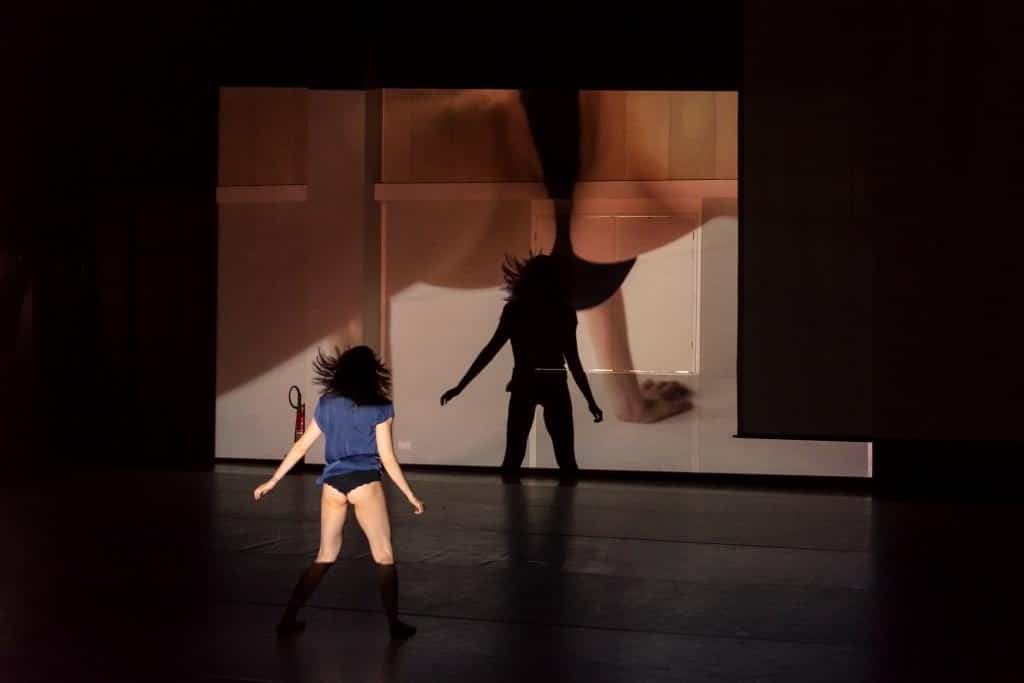
Cross over with science
In the past, the festival made a cross over with neuroscientist Christian Keysers. Suzy Blok: ,,We chose this based on the idea 'Knowledge makes love'. Keysers is an expert on mirror neurons and kinesthetic empathy. People have an innate tendency to mirror what they see. For example, if you see someone stumbling, a reaction occurs in you as if you were stumbling yourself. This is because you know from experience what tripping is. It is a kind of instant recognition. This makes you feel like you are stumbling along with the other person. Keysers conducted research at performances of our festival, with test groups. His theories were confirmed. At the end of the festival, he presented the results."
Interactive introductions
Keysers' insights work through in Sanne Wichman's interactive introductions. Sanne has a master's degree in arts education and is a teacher and production manager.
Sanne Wichman: ,,Before I give the introductions, I consult with the makers. We then talk about the underlying idea of their performances. So about what they want to give the audience."
,,In the interactive introductions, I let the audience experience something of what the creator is working on. If you recognise something, you may be able to sympathise more than if something is strange to you. In the workshops, I let the students experience something of the movements they are going to see. The experience I give the audience allows them to experience the performance and undergo it more intensely."
New target groups
,,This is how we bring performances, makers and audiences closer together. With this, we try to connect new audiences with modern dance. In doing so, we start from a few questions. Where can dance be relevant for audiences? How can we expand the audience group? There are many art forms. Not everyone necessarily chooses dance. What we do is seek audiences that are tangentially related to dance."
Suzy Blok: ,,It's not necessarily about winning additional audiences. Where can modern dance be relevant to audiences? That's what it's about. There are many artistic expressions. Everyone has their preference. Not everyone has to choose dance. It's about the question: which audience do we, as dance makers, have common ground with? I think it is good to give people a taste. Then they decide for themselves whether they want to get into dance."
,,We also target schools. This year, they are students from the Montessori Lyceum in Amsterdam. Zeynep Gündüz, a teacher at Codarts Hogeschool voor de Kunsten and the Amsterdamse Hogeschool voor de Kunsten, gives a general introduction about contemporary dance. She focuses that introduction on the Moving Futures festival. She introduces students to questions such as: what kind of work am I going to see? How can you look at a performance? How does the performance relate to my experience? Sanne then gives them physical assignments. These focus on elements from the performances they are going to see."
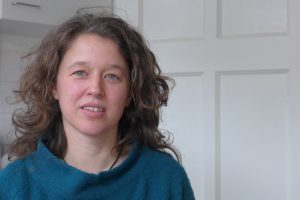
Contact with the public
Choreographer Marie Goeminne is convinced that the context programmes will bear fruit. They tie in with new forms of communication with audiences.
Marie Goeminne: ,,I used to find it very exciting to show a play to an audience. When it was over, I preferred to hide. I did hear via via how the audience had reacted to it."
,,Later, pre- and post-conversations were organised. I had to get used to that. I thought, 'I already share myself in the theatre performance! Why should I also share myself in such a conversation with others?' But I came to realise that the dialogue with the audience does not begin and end with the performance."
Heart to heart
,,I find such an interview a positive addition now. In previous performances of 'Have I Been Here Before', I brought in two people who specialise in post-performance interviews. They did research in that field. They made sure that the atmosphere of the performance continued during the aftertalk. That was not easy. It was an intense performance. They put questions to the audience. They also handed out cards with an outline drawing of a human figure. They asked the audience to colour them in as they had experienced the performance. In this way, the heart-to-heart contact that had developed during the performance remained intact."
,,Importantly, people do not react to what they see only from their minds. From the mind, people want to analyse what a performance means. But it is better if they allow what comes to them in the performance to sink in. The dancers speak from their bodies. So why shouldn't spectators also react from the physical feeling the performance evokes in them!"
,,To watch a dance performance is to physically feel the movements. That's what I imagine a meeting between dancers and audience to be. An insight into each other's world. That's what I like about the Moving Futures festival. It stimulates the immersive theatre experience. And for me, it means knowing more about what is going on among the audience again."
Suzy Blok on the Moving Futures festival programme
,,When programming, we had several starting points. First, we looked at whether a young choreographer was ready to perform work in front of an audience. This year, we also focused on thematic coherence. Each evening contains performances that are thematically connected. One of the themes is gender. Another is identity. The question: where do you come from? Culturally, but also: from which dance worlds?"

,,This is how Joseph Simon made 'The Culture Kid'. Joseph grew up in a different country from where his parents grew up. How does that affect him? His background as a dancer also ties in with the theme of identity. He has danced classically as well as break dance. As a creator of contemporary dance, he combines these two styles."
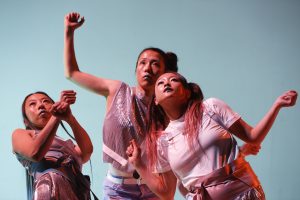
, "Geisha's miracle" by choreographer Jija Sohn is also about identity. Her parents are Korean. She herself was born in Japan. The performance, danced by three Japanese women, brings together different cultures. Exoticism plays a role. Also, the question of whether the cultures persist as extremes or combine."
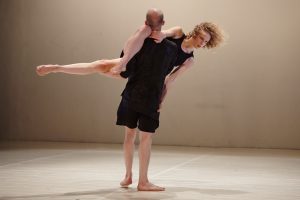
"The opening performance is 'Your Mother at my Door' by Timothy and the Things. This one is about breaking free from your background. Finding individuality. We also have relational themes and performances around technology and performance. Last but not least, Cinedans is hosting a programme of dance films.
The programme in the various cities can be found at http://movingfutures.nl
